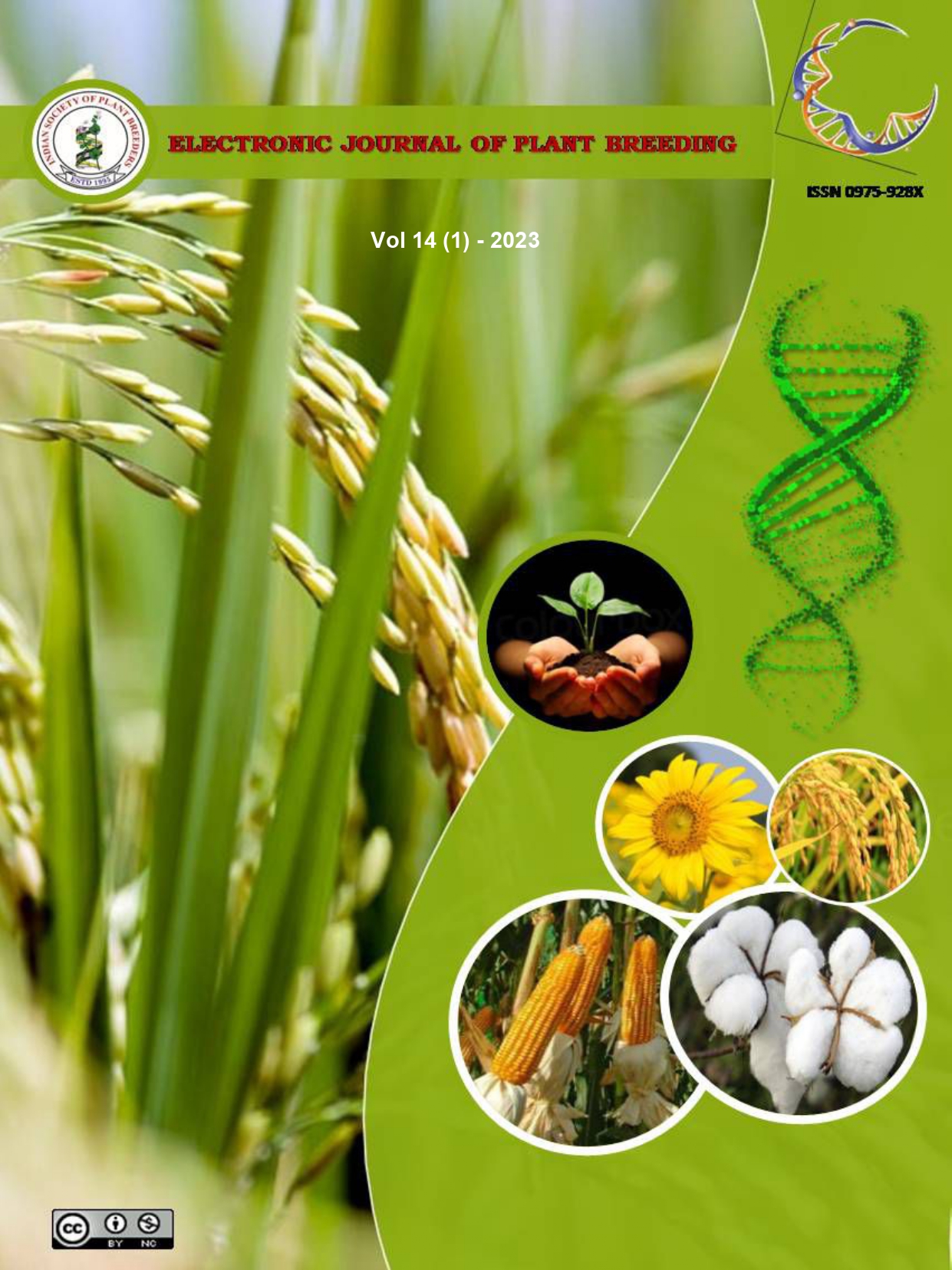Genetic variability and character association studies among seed yield and yield component traitsin safflower (Carthamus tinctorius L.) genotypes
Abstract
A study was carried out to assess the genetic variability and association among yield attributing traits in 60 different safflower genotypes over six environments. The pooled analysis of variance (ANOVA) revealed that all attributes had a considerable degree of variation.The pooled analysis of variability parameters revealed that the phenotypic coefficients of variation (PCV) was higher than the genotypic coefficients of variation (GCV)for all of the characteristics evaluated, indicating that experimental variance contributed to total variation.Petal yield/plant and seed yield/plant had the highest PCV and GCV followed by number of capitula/plant, number of seeds/capitula, height of insertion of first branch, hundred seed weight, number of primary branches/plant, length of longest primary branches, number of secondary branches and height up to main capitula.Number of capitula/plant, seed yield/plant, petal yield/plant, height of insertion of first branch, number of seeds per capitula, hundred seed weight, number of primary branches/plant, length of the longest primary branches, number of secondary branches, height upto main capitula, capitulum diameter and plant height all had high heritability and genetic advance as percent of mean. Seedyield/plant showed positive, significant and directcorrelation with number of capitula/plant, number of seeds/capitulum, height up to the main capitulum, plant height, number of primary branches/plant, capitulum diameter, and hundred seed weight.Number of capitula/planthad the maximum direct effect on grain yield/plant followed by number of seeds/capitulum, hundred seed weight and petal yield/plant. Hence selection of these traits would improve seed and petal yield in safflower breeding program.

